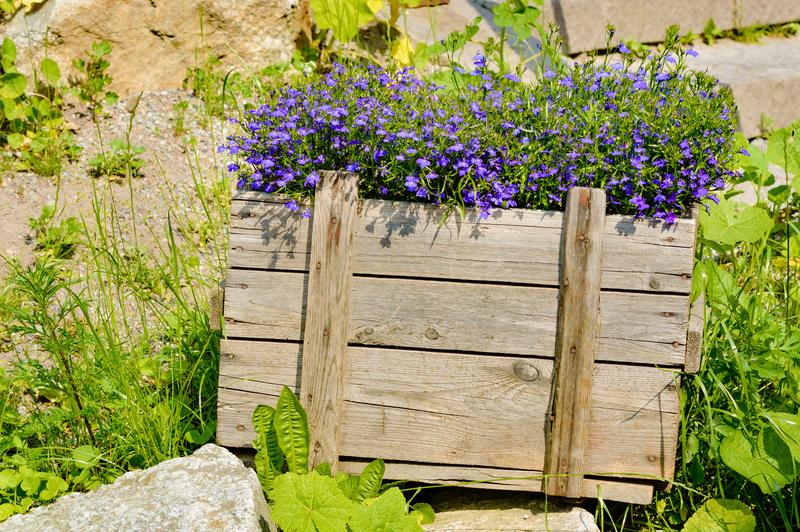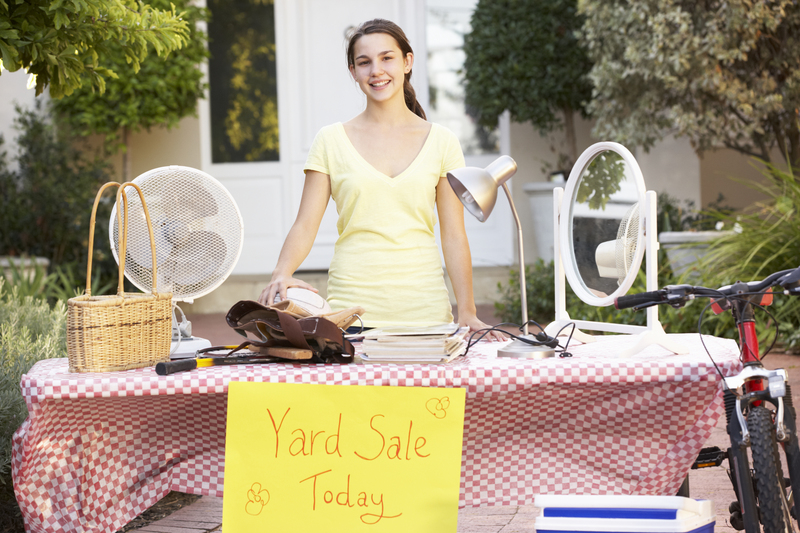Rethinking Packaging Waste for a Sustainable Tomorrow
Posted on 29/09/2025
Rethinking Packaging Waste for a Sustainable Tomorrow
Packaging waste has become one of the most pressing environmental challenges of the 21st century. From plastic wrappers to cardboard boxes, the explosive growth of e-commerce, convenience foods, and global distribution networks has flooded our planet with mountains of discarded packaging. As we look to the future, rethinking packaging waste isn't merely an option--it's imperative for a healthy, sustainable tomorrow. In this article, we'll explore the depths of the problem, innovative solutions, and actionable steps that consumers, businesses, and policymakers can take to create a world with minimal packaging waste.
Understanding the Scope of Packaging Waste
The Global Packaging Waste Crisis
According to recent estimates, over 300 million tons of plastic are produced globally each year, and a significant portion is used in packaging. Paper, cardboard, aluminum, glass, and various composite materials also make up a considerable share of packaging waste. Unfortunately, a staggering amount ends up in landfills, incinerators, or worse--polluting our oceans and landscapes.
- Plastic packaging: Lightweight, versatile, but persistent in the environment for hundreds of years.
- Paper and cardboard: Often recyclable but still resource-intensive to produce and transport.
- Glass and metal containers: Durable and reusable, but heavy to ship and energy-consuming to recycle.
The scale of this waste is alarming. In 2023, it was estimated that less than 15% of plastic packaging is recycled globally. The rest either ends up in landfills or as litter in natural ecosystems. The ever-increasing trend in online shopping further accelerates the growth of packaging disposal challenges.
The Environmental Impact of Discarded Packaging
Packaging waste contributes to a range of environmental concerns:
- Landfill Overflow: Non-biodegradable packaging takes up valuable space for decades or centuries.
- Pollution: Plastic particles and toxic chemicals leach into soil and waterways, threatening wildlife and human health.
- Greenhouse Gas Emissions: Both the production and disposal of packaging generate substantial CO2 and methane emissions.
- Resource Depletion: Extracting virgin materials for continuously growing packaging needs puts a strain on forests, minerals, and fossil fuels.
By rethinking our approaches to packaging waste, we can mitigate these negative impacts and pave the way for a greener, more resilient future.

Innovations in Sustainable Packaging Solutions
Biodegradable and Compostable Materials
One of the most promising trends in sustainable packaging is the development of biodegradable materials. Unlike conventional plastics, these alternatives break down naturally in composting environments, reducing their ecological impact. Examples include:
- PLA (Polylactic Acid): Derived from corn, sugarcane, or potato starch, PLA can replace traditional plastics in many applications.
- Mushroom Packaging: Made from agricultural waste and mycelium, it's fully compostable and biodegradable within weeks.
- Bagasse and Plant-Based Fibers: By-products of sugarcane processing provide a strong, compostable option for food containers and trays.
While biodegradable packaging is not a silver bullet (it requires proper composting facilities to break down efficiently), it's a step towards reducing harmful waste.
Reusable and Returnable Packaging Systems
Why throw away packaging when it can be reused multiple times? Many companies are now adopting closed-loop systems, where containers, boxes, or pallets are returned, cleaned, and reused. Key models include:
- Deposit-return schemes for glass bottles, milk crates, and beverage containers.
- Reusable e-commerce packaging: Brands like Loop offer durable tote-like containers that are shipped back to the supplier for refilling.
- Refillable bulk sections in supermarkets and zero-waste stores, allowing customers to bring their own containers.
Reusable packaging dramatically cuts down on single-use waste, while conserving resources and saving money for companies and consumers in the long run.
Recyclable and Easily Separable Packaging
Designing packaging with recyclability in mind makes it easier for recycling centers to process materials. Innovations include:
- Mono-material packaging: Avoids layers of mixed materials that are hard to separate and recycle.
- Clear labeling systems: Help consumers sort and dispose of packaging effectively.
- Simplified packaging shapes: Reduce the number of materials wherever possible, making recycling easier and more cost-effective.
The aim is to ensure that after a product's use, its packaging can be transformed back into raw materials for new packaging--a process known as a closed-loop circular economy.
Tackling Packaging Waste at Every Stage of the Life Cycle
Designing Out Waste From the Start
One of the most effective ways to tackle packaging waste is to design products and packaging with sustainability in mind. The process, called eco-design, considers a product's full life cycle from resource extraction to disposal. Principles include:
- Reducing material use: Use fewer resources without sacrificing product integrity.
- Using renewable or recycled content whenever possible.
- Reducing unnecessary packaging: Eliminate excessive fillers, double boxes, and multilayer wrappings.
- Design for reuse or recycling: Create packaging that can be easily cleaned, refilled, or processed after use.
Eco-design not only delivers environmental benefits but can also strengthen brand reputation and appeal to eco-conscious consumers.
Optimizing Logistics and Distribution
Packaging design also impacts logistics. Smarter packaging reduces:
- Shipping volume and weight: Lower transportation emissions and costs.
- Product damage during transit: Well-designed packaging protects products, reducing returns and further waste.
- Storage space needs: Streamlined packaging supports efficient warehouse operations.
Collaborative efforts between manufacturers, logistics providers, and retailers can yield packaging that's both functional and sustainable.
Consumer Education and Engagement
Consumers play a crucial role in minimizing packaging waste. Through informed purchasing choices and proper disposal habits, individuals can make a significant impact. Effective strategies for public engagement include:
- Clear recycling instructions on products and packaging.
- Incentives for returning or reusing packaging (e.g., bottle return schemes, discounts for reusable containers).
- Awareness campaigns on the impact of excessive packaging and how to reduce it.
- Shopping local and supporting brands that prioritize sustainable packaging initiatives.
By making small changes, consumers collectively create major waves in the battle against packaging pollution.
Legislation and Policy: Driving Systemic Change
Global and Local Regulations on Packaging Waste
Governments worldwide are enacting policies to curb packaging waste and foster innovation. Key approaches include:
- Single-use plastic bans: Many regions prohibit or restrict plastic bags, straws, and certain types of packaging.
- Extended Producer Responsibility (EPR): Producers are responsible for collecting and recycling the packaging they create.
- Mandatory recycling targets: Obligations for municipalities and businesses to reach certain recycling rates.
- Packaging taxes/levies: Financial incentives to reduce packaging use and support recycling infrastructure.
While policies differ by region, the overarching goal is to encourage manufacturers to develop innovative, less wasteful solutions and shift responsibility for packaging disposal from governments and consumers to producers.
Corporate Responsibility in Reducing Packaging Impact
Leading companies are increasingly adopting environmental stewardship in their packaging strategies:
- Switching to recyclable or compostable materials.
- Offering take-back programs for used packaging.
- Joining global alliances for plastic waste reduction, such as the Ellen MacArthur Foundation's New Plastics Economy initiative.
- Transparency reporting on packaging-related emissions and reduction efforts.
Through proactive measures, businesses can attract conscientious customers, reduce costs, and prepare for a low-waste future.
The Role of Technology and Research
Smart Packaging and Digitalization
Modern technology can greatly enhance packaging sustainability. Smart packaging can include:
- QR codes that inform consumers about recycling or reuse options.
- Track-and-trace systems to enable reusable packaging logistics.
- IoT sensors that monitor freshness, reducing the need for excessive packaging for preservation.
Such innovations not only reduce waste but also enhance the consumer experience and supply chain transparency.
Advanced Material Development
Researchers are constantly pushing the boundaries of material science for better packaging solutions, including:
- Edible packaging made from seaweed, starch, or rice paper.
- Nanomaterials that provide strength with less material.
- Advanced barrier coatings that keep food fresh without plastic laminates.
The future of sustainable packaging lies at the intersection of breakthrough science, scalable production, and consumer acceptance.
Steps Everyone Can Take to Cut Packaging Waste
For Consumers
- Bring your own bags, bottles, and containers when shopping or ordering takeout.
- Opt for products with minimal or plastic-free packaging.
- Recycle correctly--know your local guidelines and sort materials properly.
- Support companies that offer refill, reuse, or take-back options.
For Businesses
- Audit your packaging to identify unnecessary materials or design inefficiencies.
- Switch to sustainable materials and work with suppliers who share your environmental vision.
- Educate your customers on recycling and proper disposal.
- Pilot reusable packaging programs, especially for online deliveries or subscription services.
For Policymakers
- Invest in recycling infrastructure and public education campaigns.
- Incentivize research and adoption of sustainable packaging technologies.
- Set ambitious targets for packaging waste reduction and enforce compliance.

The Promise of a Circular Packaging Economy
True sustainability in packaging lies in a circular economy--one where materials are continuously reused, recycled, or safely composted, thereby minimizing the extraction of new resources and environmental harm. It means:
- Designing for durability, reuse, and recyclability from the outset.
- Building convenience and incentives for both businesses and consumers to choose sustainable options.
- Harnessing innovation and policy to eliminate single-use and hard-to-recycle packaging.
Rethinking packaging waste is not just about cleaning up after ourselves--it's about reshaping industries and systems for a future where waste is a thing of the past.
Conclusion: Creating a Sustainable Tomorrow, Today
The challenge of packaging waste may seem daunting, but it's also an opportunity for transformation. By engaging every link in the supply chain--from innovating materials science to changing consumer behavior and embracing robust policy--we can drastically reduce the environmental footprint of our daily purchases.
Rethinking packaging waste for a sustainable tomorrow is a commitment to smarter design, responsible consumption, and systemic change. With each mindfully chosen product and each packaging innovation, we plant the seeds for a cleaner, greener world. Let's make packaging waste a relic of the past, and choose a future where sustainability wraps around every aspect of our lives.

 020 3859 5580
020 3859 5580 020 3859 5580
020 3859 5580





 House Clearance
House Clearance Rubbish Collection
Rubbish Collection House clearance in London has never been easier, as Junk Removal Services can take care of your every need. From individual house junk...
House clearance in London has never been easier, as Junk Removal Services can take care of your every need. From individual house junk... With Junk Removal Services you can be confident that you’ll receive the most professional and affordable rubbish collection service within the London...
With Junk Removal Services you can be confident that you’ll receive the most professional and affordable rubbish collection service within the London...





